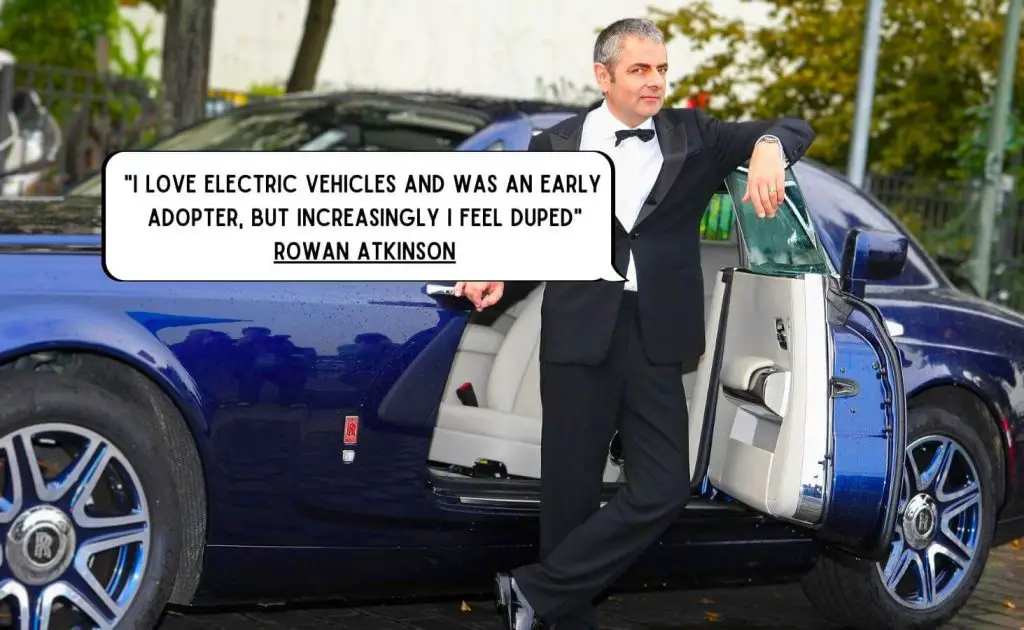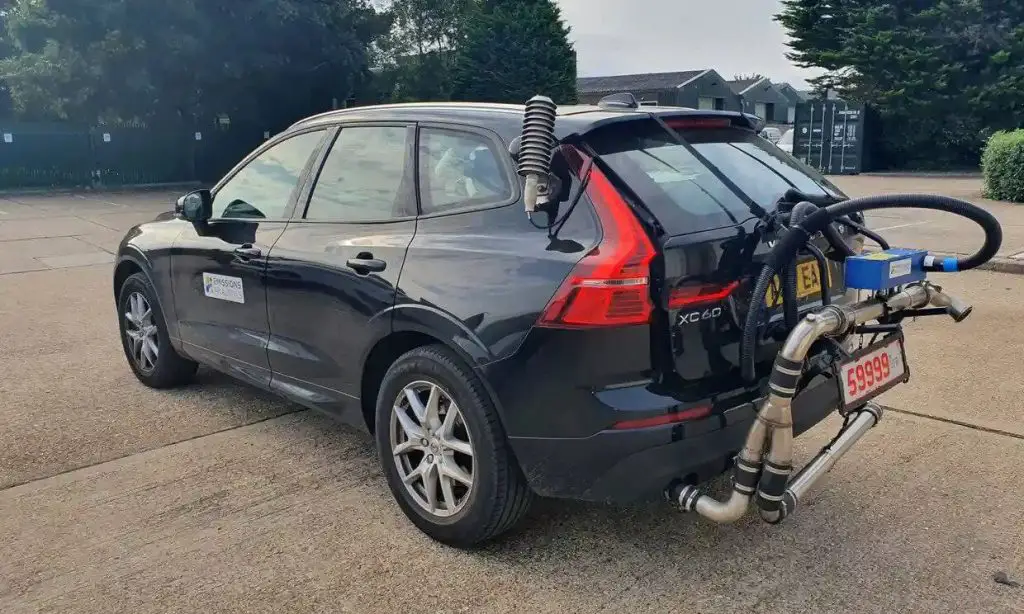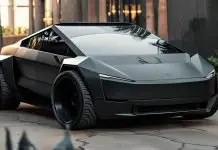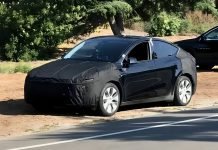Rowan Atkinson, one of the most loved British actors and iconic stars of the beloved comedy series “Mr. Bean,” has recently expressed his deep sense of disappointment and feeling “duped” by the promises surrounding electric vehicles.
Known for his wit and sharp comedic timing, Atkinson has joined the ranks of celebrities advocating for environmental causes. However, his mistrust of the viability of electric cars left him a bit unhappy with the purported benefits of these vehicles.
As a well-known name in the entertainment industry, Atkinson’s rather blunt remarks have sparked a renewed debate on the future of electric vehicles and their impact on the environment.
Here’s the electric scoop!

Table of Contents
Rowan Atkinson Blunt Take On EVs
Rowan Atkinson, the British comedian widely recognized as the iconic Mr. Bean, has captured the hearts of audiences around the world with his impeccable comedic timing. However, beyond his on-screen antics, Atkinson has always harbored a deep passion for cars.
Rowan Atkinson, the acclaimed actor renowned for his roles in comedy and beloved for his portrayal of Mr. Bean, possesses a unique perspective on electric vehicles. How?
Well, along with an educational background in electrical and electronic engineering from Newcastle University, followed by an advanced degree in electrical engineering from The Queen’s College, Oxford, Atkinson is a passionate racer too.
Recently, he took to The Guardian to express his concern regarding the essential benefits of electric vehicles. As the United Kingdom proposed legislation to ban the sale of new petrol and diesel cars by 2030, Atkinson felt compelled to question touted advantages of EV adoption.
In his opinion piece, he does acknowledge the impressive performance and quiet nature but couldn’t help feeling a sense of disappointment. Atkinson says when you drill into the facts about the electric motors, you don’t really feel all those environmental claims to be an actual cure-it-all solution.
It is truly remarkable that nowadays, it is possible to manufacture a car for as little as £15,000 that, with proper maintenance and care, can last for a remarkable 30 years. This realization prompts sobering thoughts about our current consumer behavior in the car industry.
If the initial owners of new cars simply extended their ownership period from the current average of three years to five years, it would have a significant impact on car production and the associated CO2 emissions.
This shift in mindset would result in a substantial reduction in environmental impact, while still allowing us to enjoy the same level of mobility, albeit with slightly older vehicles. It highlights the importance of embracing longevity and reevaluating our consumption patterns to prioritize sustainability and reduce our carbon footprint.
Why EVs Are So Controversial?
As an early adopter of electric vehicles, he recognizes their potential calling EVs wonderful mechanisms. However, he expresses concerns regarding the proposed gas car ban in the UK.
He doesn’t like the fact that the whole shift to greener cars is based on only zero emissions from the exhaust pipe of the vehicle.
But when we consider the bigger picture, including the battery and EV manufacturing process, a different perspective emerges. Atkins points out how Volvo once made a big statement saying making electric cars produces more emissions than making petrol cars.
This disparity arises primarily from the lithium-ion batteries used in most electric vehicles. These batteries are excessively heavy, demanding a significant amount of energy to produce, and they have an average lifespan of 10 years or more.
Volvo also said that electric cars become greener overall during their lifetime, but it takes around four to nine years of driving for that to happen, covering about 30,000 to 68,400 miles in the UK.

Volvo shared this information during the COP26 climate summit in Glasgow. They even published a report about the environmental impact of their electric car called the C40 Recharge, which costs £57,400.
Atkinson believes that while alternatives like solid-state or hydrogen-based fuels are still under development, the real transformation lies not just in engineering advancements but in society’s relationship with cars.
It is hardly any surprise now that there is a significant amount of research and development dedicated to finding alternatives to the current state of electric vehicle batteries. These efforts have led to the exploration of so-called solid-state batteries, which are claimed to offer faster charging and significantly lighter weights, potentially reducing the burden of heavy batteries.
What is more critical to note is that these advancements are still in their infancy and are years away from becoming commercially available.
Meanwhile, the electric vehicle market continues to expand at an alarming rate, resulting in the production of millions of electric cars equipped with overweight batteries that are rapidly becoming obsolete. It seems that by the time the promising solid-state batteries or better technology will become a reality, we would already be burdened with outdated and inefficient EVs pile-up in our driveways.
He emphasizes the need for a holistic overhaul, that includes both technological innovation and a shift in societal attitudes towards choosing their vehicles. People might not really want to shift to electric without the platform to be explored and researched further.
With his thought-provoking words, the beloved Man vs. Bee actor seems to have sparked another debate about the true impact of electric vehicles on our planet.
Electric Vehicles Are Not The Only Option
Atkinson is a bit shaken by the approach of government on the adoption of electric vehicles in the coming years. He feels we are not ready for the electric era just yet when the technology is still questionable or in its Beta phase.
Toyota, for instance, has invested heavily in hydrogen fuel cells as a means of powering vehicles, which weigh half as much as their lithium-ion battery counterparts and can be refueled at a similar speed to traditional petrol cars.
Moreover, concerns have been raised regarding the weight of lithium-ion batteries in heavy trucks used for long-distance haulage, prompting the exploration of injecting hydrogen into a new type of piston engine.
JCB, a prominent construction equipment manufacturer, has made significant strides in developing hydrogen engines and aims to put them into production within the next few years.
Taking a broader perspective, it becomes evident that considering the entire life cycle of automobiles is essential. Rowan points out how one of the most significant challenges we face is the prevailing “fast fashion” auto sales culture deeply ingrained in the car industry for decades.
In today’s consumer-driven society, the norm is to keep a new car for a mere three years before selling it or trading it in, largely influenced by the widespread adoption of three-year leasing models.
This approach seems incredibly wasteful when we consider the excellent condition in which a three-year-old car typically remains in three years.
Such outrageous use of the world’s natural resources is truly concerning, highlighting the need to reevaluate our relationship with cars and move away from this disposable mentality that exacerbates environmental impact.
If hydrogen emerges as the preferred power source for trucks, and widespread hydrogen filling stations become a reality, it could potentially become a popular and accessible choice for cars as well. The same goes for other alternative fuel options in the future.
Rowan emphasizes the importance of recognizing the value of the current global car fleet, which includes around 1.5 billion vehicles. These cars have already contributed to environmental impact during their manufacturing process.
While it’s a good idea to reduce our reliance on them, we should also find ways to keep them while minimizing their harmful effects.
One simple approach is to use them less often.
He said that one environmentalist once shared with him the advice to choose an older car if we really need one and try to use it as little as possible.
Another practical step is to speed up the development of synthetic fuel, which is already being used in motor racing. Formula One has already committed to using synthetic fuel from 2026.
German car company Porsche, for example, is actively working on a fuel production process in Chile that uses wind power and relies on water and carbon dioxide as the main ingredients.
With further advancements, this fuel could be used in all petrol-engine cars, making their operation almost carbon-neutral. Embracing such initiatives allows us to preserve the existing vehicle stock while significantly reducing its impact on the environment.
What To Expect In The Future?
Rowan Atkinson, known for his wit and comedic brilliance, has shared his insights on electric cars in response to inquiries from environmentally conscious friends. Drawing from his expertise as a car fanatic and expert, his concerning point of view does make sense somehow.
Atkinson suggests that if their current car is an old withering gas and one frequently navigates through the city, transitioning to an electric car might be worth considering the idea. However, for others, he recommends holding off for the time being.
In Atkinson’s view, while electric motors hold immense potential for generating genuine, global environmental benefits, that day has not yet dawned. His perspective highlights the need to address challenges and further advancement of battery technology before it can truly fulfill its promise.
So essentially saying, when it decides whether to switch to an electric vehicle (EV), different factors come into play depending on the condition of your current internal combustion engine (ICE) car.
If your ICE car still has a significant lifespan ahead, the general recommendation is to keep it until it reaches the end of its useful life. However, for those in the market for a new car, EVs present a compelling option with numerous advantages.
As one Reddit user wisely pointed out, the decision to switch depends on how much life is left in the ICE car. If the car is nearing the end of its intended usage, trading it in for an EV becomes more favorable.
Taking advantage of incentives and subsidies, which are often available for EVs across the globe, can make EV adoption even more worthwhile. It’s important to acknowledge that we are currently in the early stages of EV development, comparable to the initial stages of ICE vehicles 120 years ago.
With ongoing advancements and improvements occurring on a monthly basis, the EV landscape is evolving rapidly, and more EVs are appearing on the road. So shifting to newer models as early as every three years do make sense for the current EV buyers or lessees.
Bottomline
Rowan Atkinson believes that the honeymoon period of EVs or the excitement about electric cars is fading, and he thinks, it’s a good thing. He says we need to explore more options to address the big environmental problems caused by our reliance on cars.
We should focus on developing hydrogen and synthetic fuels so that we don’t have to get rid of older cars that still have a lot of life left in them.
At the same time, we should change the way the car industry works, so people keep their new cars for longer.
Atkinson, who loves cars, advises people who care about the environment to consider electric cars only if they have an old diesel car and drive a lot in city centers. For others, he thinks it’s best to wait until electric cars truly make a big environmental difference on a global scale.
At first, his remarks might seem quite reserved but if you give it a deep thought, you might actually relate to his concerns towards the automobile industry. Not only we are over-exhausting our resources but are also driven by the government and lobbyist push by giant automakers and companies.
What do make of Atknison’s remarks on EV adoption? Do share your views with us!



















Some positive I see in electric cars is the ease of maintenance and potential for modular design. In the defense industry there’s a push toward open architecture and future proofing designs, in most cases the life-cycles are 30 years with the need to be updated with new technology and upgrades through the years. Using the right architecture EVs could potentially remain relatively new and up to date. With everything on the vehicle easily replaced, and upgradable they can be refurbished. It may require manufacturers or car dealers to modify their profit models. They could make significant profit through offering vehicle upgrades, replacement parts. Economy of scale is much more achievable for EVs. This type of system would not work effectively for ICE vehicles as they are more complex given all the moving parts.